Clocking in at 882 feet long, the Titanic's size was unparalleled — but it might have also hastened its demise.
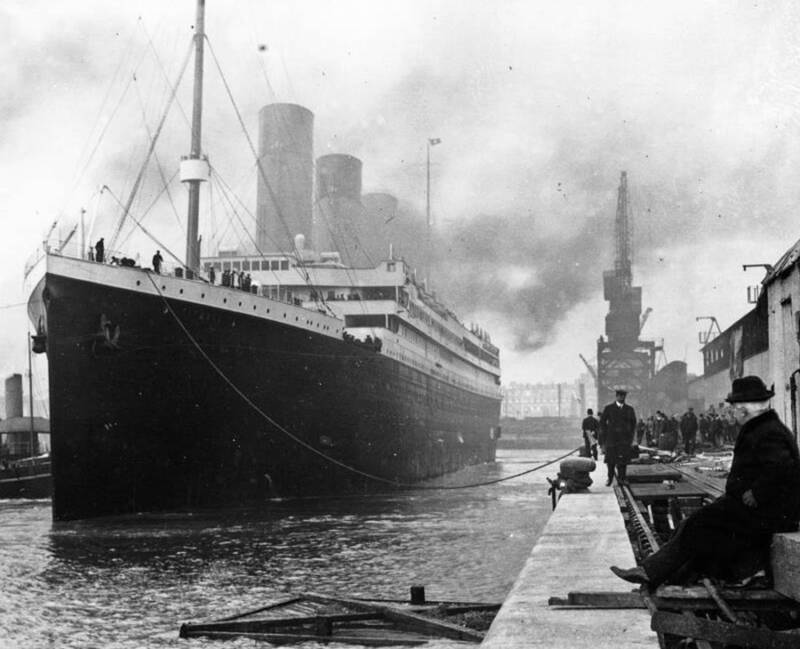
Wikimedia CommonsMost know the story of its tragedy, but few know how big the Titanic was. When it set sail in 1912, it was the largest vessel ever built.
When it launched in April 1912, the Titanic was deemed the largest ship in the world. The literal behemoth measured 882 feet long and 92 feet wide, with a weight of over 46,000 tons.
Indeed, before it struck an iceberg and sank on April 14, 1912, the Titanic was known as a marvel. It symbolized an exciting leap forward in travel as it featured an array of new technology that promised a luxurious crossing for those who could afford it.
But did all that grandeur hasten the ship’s demise?

Building The World’s Largest Ship
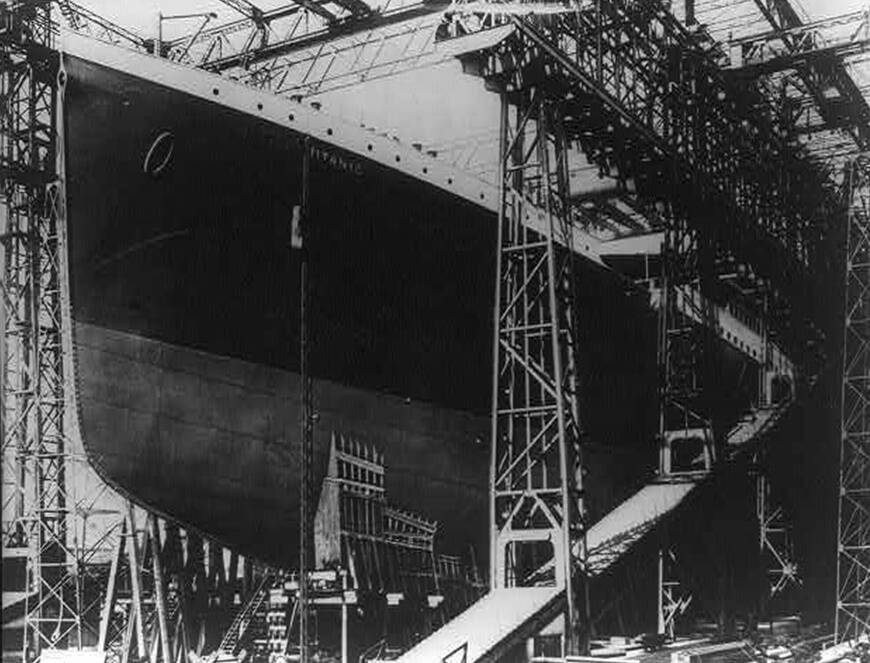
Library of CongressThe Titanic being assembled at the Harland and Wolff shipyard in Northern Ireland.
The shipping business of the early 20th century was dominated by a handful of companies, one of which was the White Star Line. To outdo their rivals, who had just released the passenger boat Lusitania — which also sank — White Star began to construct its most ambitious vessel yet: the RMS Titanic.
Named for the gargantuan gods of Greek mythology known as the Titans, the Titanic was designed to be a floating behemoth, and it would be the largest passenger ship in the world at the time that it was launched.
The Los Angeles Herald was among the first to report on the massive project in its April 23, 1908, print edition:
“Two new White Star Liners which will be the largest vessels yet projected will be laid down at Belfast… the ships are to be fitted with combination turbines and reciprocating engines guaranteed to maintain a speed of twenty-one knots.”
Construction on the Titanic began in earnest in 1909. It was made by the Harland and Wolff shipyard in Belfast, Ireland, and it took three million rivets and 3,000 workers to do the job. All told, the ship cost $7 million dollars — or about $200 million today.
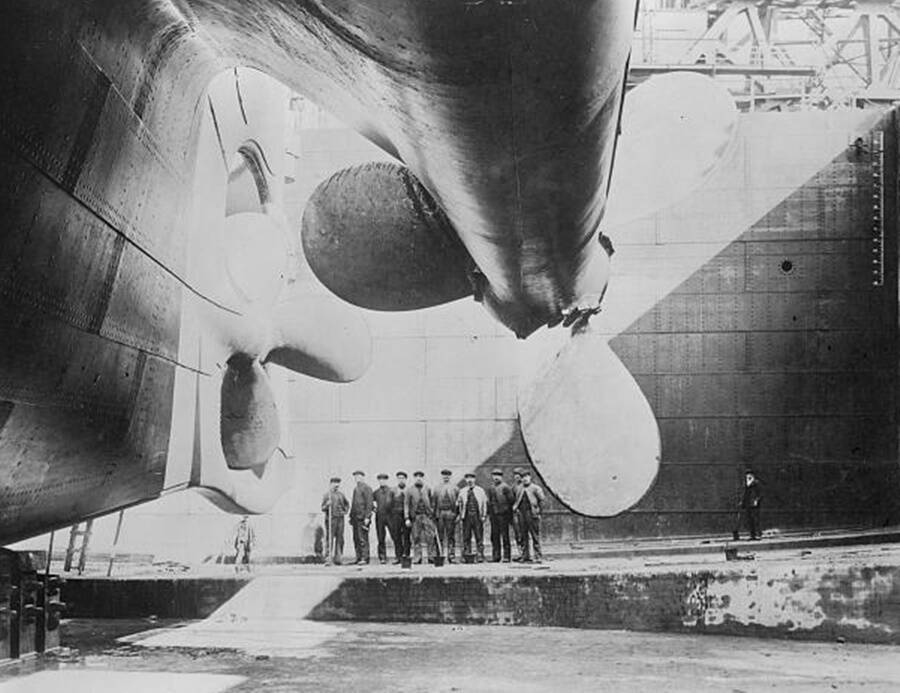
Library of CongressThe ship’s propellers were designed to enable it to move faster.
Even though the Titanic shrinks in size when compared with the mass of today’s cruise ships, which are about a third longer and twice as wide, it was a record-breaker in its day. The White Star Line had planned to build ships of 60,000 tons, though the Titanic would actually only clock in at 46,000, it was still the biggest ship ever built by that time.
Not everyone was thrilled with the Titanic’s enormous size, however. Some shipbuilding experts warned that the new vessels might be too big to be docked. In the The Washington Times, officials suggested that the Titanic and one of its sister ships, the Olympic, would have to unload passengers and cargo at sea.
Regardless, the Titanic was completed on March 31, 1912, and a few days later, it set out on her doomed maiden voyage.
How The Titanic’s Size May Have Hastened Its Sinking
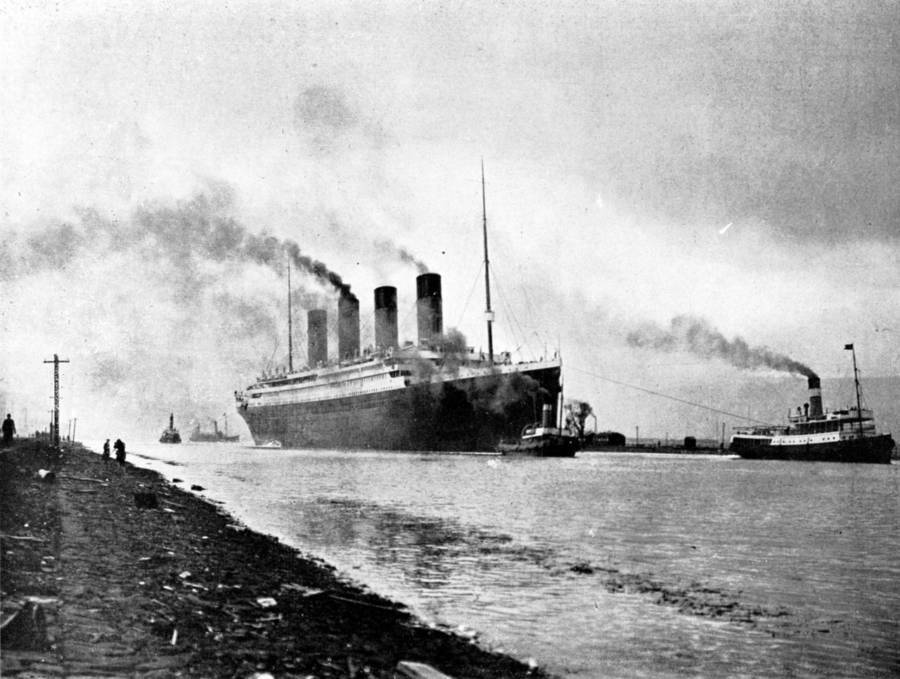
National ArchivesThe Titanic was branded as an “unsinkable” giant of the sea. Sadly, that claim turned out to be untrue.
The RMS Titanic’s sheer size was one of the vessel’s major selling points when tickets went on sale. Despite its precarious heft, the Titanic was branded as “unsinkable.”
“There is no danger that Titanic will sink,” boasted Phillip Frank, White Star Line vice president. “The boat is unsinkable and nothing but inconvenience will be suffered by the passengers.”
White Star took advantage of the ship’s enormous size, filling it with luxury amenities to attract wealthy passengers. The Titanic contained a gym, veranda cafes, a swimming pool, Turkish baths, and a jaw-dropping grand staircase that seemed better suited for a millionaire’s mansion than a transatlantic vessel.
Then, four days after it set sail on April 10, 1912, from the port of Southampton, England, the Titanic hit an iceberg.
Of the approximately 2,200 passengers and crew aboard the ship, around 1,500 perished. For all its bells and whistles, the Titanic lacked what people actually needed: lifeboats. Although the ship’s lifeboats exceeded the number legally required, it did not have enough for all passengers aboard.
Further, modern experts believer that the massive ship sank faster than it should have due, in part, to its size. Though it was built with multiple below-deck compartments designed specifically to take on water in the event of a breach, these compartments weren’t water-tight and quickly took on more water than the boat could handle, pulling it underwater.
It seems perhaps the ship’s sheer size may have worked against it as well. Slowing and redirecting a ship of its mass required much more distance and time than it had when the crew realized they were in danger of hitting an iceberg.
Without enough distance to change course, the Titanic sideswiped the iceberg, damaging nearly 100 meters of the right side of the hull above and below the waterline.
Finally, as the front of the ship continued to take on water and sink, the back of the ship, which was heavy with three massive propellers, pulled down on the opposite side, nearly splitting the ship in half.
Seven hundred passengers survived the tragedy and reached the Titanic’s intended destination of New York on April 18. Many went on to share their incredible Titanic survivor stories.
Ship Builders Learned From The Tragedy
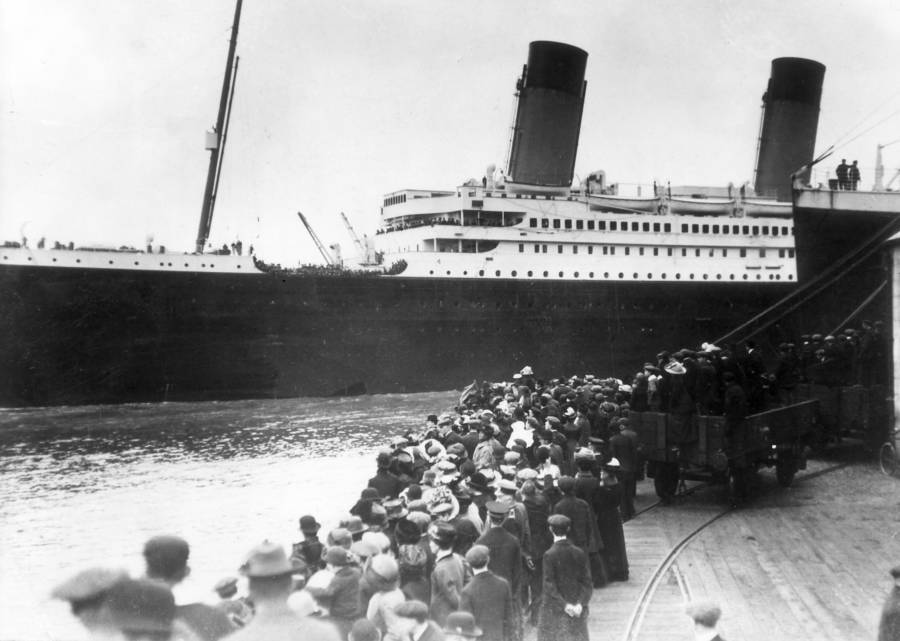
Getty Images Building the Titanic cost around $200 million by today’s standard.
The horrific incident became a somber counterweight to the triumphant myth of an unsinkable ship. Following the Titanic’s sinking, manufacturers Harland and Wolff made drastic changes to its two sister ships, HMHS Britannic and RMS Olympic. The vessels were upgraded with higher bulkheads, a second internal hull, fireproof materials, and, most importantly, more lifeboats.
Modern-day vessels are now also equipped with strict safety features and protocols to prevent other maritime disasters like the Titanic.
In 2012, a report published by specialist marine insurer Allianz Global Corporate & Specialty found that the ships that were lost each year had significantly decreased. The report recorded losses of one in 670 ships per year compared to the one in 100 ships lost annually at the time of the Titanic.
But that does not mean there are no more improvements to be made in the field of sea engineering.
“The bottom line is no ship is unsinkable,” said Tony Selman, vice chairman of the Radio Officers’ Association. “No matter how safe a ship is, if you drive it full speed into a rock it is likely to sink.”
While it was a behemoth in its time, the Titanic would be dwarfed by modern ships today. Cruise ships are typically 20 percent longer than the Titanic was, and about twice as high. The average Royal Caribbean cruise ship weighs around 133,000 tons, much heavier than the 46,000-ton Titanic.
At least the Titanic’s tragic end has ensured that modern shipbuilders take more care in their designs.
Now that you’ve learned about the size of the Titanic, read the heartwrenching love letter to a wife from her husband aboard the Titanic days before the tragic disaster. Then, take a look at these 25 heartbreaking artifacts that were excavated from the Titanic.





